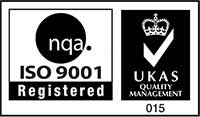These days, hardly any business owner or would-be entrepreneur in London, Surrey, or Kent needs to be told about the importance of having the best possible Internet connection at their premises.
Access to the Internet really is the lifeblood of even the smallest businesses during the 2020s. It provides a powerful means by which an organisation can reach out to its target customers, get vital work done in collaboration with others, and generate revenue.
Your own firm’s team members will need your business Wi-Fi infrastructure to provide consistently high performance and superb reliability.
The experience that your company’s Internet connection delivers has to be seamless. Otherwise, the experience that your customers or clients receive will be adversely impacted, too, which would hinder your organisation’s efforts to survive and grow.
You shouldn’t only be thinking about your business Internet package, speed, or cost
If you are reading this as a business owner or entrepreneur – or for that matter, as a key decision-maker for a business – you might understandably feel bewildered and confused by the various types of business Internet connections and installations.
Alas, this could cause you to fall into the classic “trap” that so many business owners and entrepreneurs in London, Kent, and Surrey fall into; ignoring the specifics of the Internet infrastructure your organisation invests in. You might, instead, merely look at the speed and price offered by a given Internet service provider’s business broadband package.
This approach, though, brings a high risk of the business Internet solution you receive being poorly matched to your company’s requirements.
Yes, if you’re still in the first weeks and months of your business’s growth journey, a standard broadband connection is likely to suffice. But as your operations expand, there is a good chance that you will yearn for a quicker and more dependable business Wi-Fi installation.
So, in this article, our professionals in Wi-Fi network design at DTS London will take a closer look at the various forms that business-ready Wi-Fi installations can take. In addition, we will consider the potential implications of these options for your organisation.
Before we go any further… what is business Wi-Fi?
Let’s remind ourselves what Wi-Fi is. The term refers to wireless networking technology that uses radio waves to enable devices such as laptop and desktop computers – as well as other equipment like smartphones, wearables, and printers – to interface with the Internet.
It is a wireless router through which the Internet connectivity occurs. This infrastructure enables devices to exchange information with one another, thereby creating a network.
The term “business Wi-Fi”, then, refers to a wireless network that has been specifically designed to serve the operational requirements of a business.
In accordance with the very different requirements that businesses tend to have compared to homes, there can be marked differences between business-grade Wi-Fi networks and their residential counterparts.
The user capacity for business-grade networks tends to be greater, the underlying broadband connection more robust, and the security features – such as encryption – often more advanced, to cite just some potential variations.
What type of Internet connection is best for businesses?
There is no “one-size-fits-all” answer to the question of what type of Internet connection will best serve a business’s requirements. After all, businesses in the UK are hugely diverse in terms of their day-to-day operational needs and budgetary constraints.
Considering the below factors, though, will likely aid you in choosing a Wi-Fi installation as a business owner or decision-maker:
- Your business’s particular priorities and needs
By identifying the major requirements your UK organisation has for a business Internet installation, and ranking them in order of priority, you can begin narrowing down the possibilities.
Some businesses, for example, may need to prioritise cost above almost all other factors. For others, though, their principal concern may be the speed of whatever system they invest in, or the scope for it to be scaled up or down in line with evolving business needs.
- The importance of reliability and constant uptime
Of course, no one using an Internet service – whether at home or in a work capacity – will wish to have their connection interrupted.
However, there are some businesses for which it may be especially critically important to ensure continuous Internet access, so that they can deliver seamless productivity and the best possible customer experience.
- Your bandwidth requirements, both now and in the future
Some individuals and organisations may be unaware that the term “bandwidth” is not synonymous with “speed”.
Technically, bandwidth is not the speed of a data line, but instead the maximum amount of data that can theoretically flow through it in a given time period. It effectively indicates how many lanes are available for digital traffic.
So, in determining your business’s bandwidth requirements, you will need to think about the numbers of users who will be accessing the Internet at any given time, and what activities they will be using the Internet to carry out.
In addition, you must ask yourself how this might change over the months and years ahead as your business evolves.
If, for instance, you anticipate doubling or tripling your employee numbers over the next few months, or implementing new technology for which additional bandwidth will be needed, you will want to invest in a Wi-Fi solution that can be easily scaled up.
A rundown of some of the most popular types of Wi-Fi installation for businesses
Below are a few types of Wi-Fi installations that businesses commonly use. These options have their respective advantages and limitations, so there is no single option that constitutes the “best” for any and all UK businesses.
By contacting our experts at DTS London for advice and guidance, and taking into account such factors as speed, latency, scalability, uptime, reliability, security, and cost, you can help ensure you make the optimal choice for your organisation and budget.
- Fibre to the premises (FTTP)
This is a type of broadband Internet connection that directly delivers high-speed Internet to a home or business, using optical fibre cables. These cables are laid directly from the broadband interchange right into the property where the Wi-Fi connection is required.
Speeds of as much as 1,000 megabits per second (Mb) are possible with FTTP, which is approximately 30 times quicker than standard fibre.
As of 2024, FTTP is only available to approximately 60% of the UK. However, efforts are ongoing to expand this access, with a target of ensuring roughly 96% of the country can access it by December 2027.
- Fibre to the cabinet (FTTC)
If your business premises isn’t currently able to take advantage of FTTP, there is a good chance it will instead use FTTC. With this arrangement, fibre cables run from the exchange to a box in the street, and copper wires then run from the box into the property that requires the Internet connection.
The “cabinet” referred to in the name of this type of broadband, is typically a green box located on a nearby pavement – you are likely to have seen these cabinets around your local area.
An FTTC arrangement can’t hope to match the speed or reliability of FTTP, but it is at least cost-effective. Unfortunately, the further away your premises is from the aforementioned “cabinet”, the slower your business’s broadband will be, given the need for it to travel further along slow copper wires.
- Leased line
If you don’t wish to accept anything less than the highest-grade Internet presently available to all UK businesses, a leased line arrangement may be the right one for your company. You might have also seen this solution referred to as “Dedicated Internet Access”, or DIA.
As that name implies, a leased line entails the business benefitting from a dedicated, high-speed, and unlimited Internet connection that it doesn’t have to share with any other commercial premises or household. This means the business will be able to enjoy all the performance it pays for.
A leased line is rented from an ISP, and is delivered directly from the local exchange to the premises of the business. An organisation that chooses a leased line can count on it delivering symmetrical upload and download speeds, while the use of fibre optic cables for data transmission makes it more stable than a traditional connection.
As you might expect given its status as a premium service, a leased line can be expensive to have installed. Indeed, to install the circuit in the first instance, it may be necessary for you to pay excess construction charges amounting to as much as £100,000 or more.
Furthermore, factors beyond your business’s control might delay the installation of a leased line. So, the realisation of a DIA solution may depend on your business having not only deep financial resources, but also a lot of time to get issues like these resolved.
- Satellite broadband
If a given business premises can’t make use of traditional fixed-line broadband – for example, because it is in a rural or remote location – this form of wireless Internet service may appeal.
This type of installation uses a satellite dish and a modem to provide Internet access to the given property. So, in order to use this service, it will be necessary for the organisation to have a satellite dish and a transmitter attached to the property, with a clear line of sight directed towards the south.
Once satellite broadband is installed at the commercial property, it will be able to connect wirelessly to a geostationary Earth-orbit satellite, which will receive and send a broadband signal to the premises.
The exact download speeds that can be expected from a satellite broadband arrangement will depend on such factors as the chosen provider, the satellites used, and the numbers of people using those satellites for the transmission of data.
While the download speeds of some satellite broadband services might be “only” as much as 30MBps, newer satellite broadband providers have emerged in recent years, offering speeds closer to 100MBps or more.
If your business is not situated in a locality that can access traditional broadband networks, a satellite broadband arrangement could provide your premises with high-quality Internet access.
However, it is also one of the more expensive ways for an organisation to connect to the Internet, and it can’t satisfy all conceivable business performance requirements. In practice, satellite broadband is rarely chosen by businesses in the UK.
- Point to point
This type of solution – often referred to as a “PtP” or “P2P” system – is a wireless method of spreading Internet connectivity across large areas without having to draw upon extensive cabling.
This is accomplished by setting up a single high-speed connection in a suitable location, and using PtP radio equipment and antennas to set up connection points over the area where Internet access is needed.
A Point-to-Point Wi-Fi installation can be an excellent solution for businesses that need to provide Wi-Fi Internet to an outbuilding or office that is too far away from the main router.
P2P arrangements are gaining popularity among organisations that have multiple sites. This shouldn’t be overly surprising, given that the broadcasting distance of a P2P wireless installation can be as much as 12 miles, depending on the scenario.
Wireless Point-to-Point may, then, be an attractive solution for your business if you are interested in bringing many sites together as part of one network. It might also be of appeal if leased lines aren’t an option in your business’s situation, or if you are seeking a lower-cost replacement for your existing leased line.
Last but not least, the turnaround time for a wireless Point-to-Point system can be quick, at just seven days.
What is the difference between business Wi-Fi and normal Wi-Fi?
The typical home Wi-Fi setup is geared towards general Internet use – including relatively casual activities such as browsing news websites, watching online videos, and sending and receiving emails.
A business Wi-Fi service, on the other hand, is designed to serve the particular needs of businesses. A business Wi-Fi installation, then, is usually designed to handle much greater demand for Internet services than a home Wi-Fi service is built to do.
The following are some of the ways in which home Wi-Fi and business Wi-Fi tend to differ from each other:
- Business broadband normally delivers faster upload and download speeds, together with greater reliability. The speeds of a home Wi-Fi service are usually those that suit casual use in a residential setting
- A business Wi-Fi installation is usually designed to handle greater volumes of data, in addition to supporting multiple devices simultaneously, and providing different access levels for employees and customers
- Business Wi-Fi tends to be more expensive to set up than its home counterpart
- Business Wi-Fi often incorporates more advanced or bespoke security features than a home Wi-Fi system does
Prioritised customer support is often made available to users of business Wi-Fi services. This reflects the urgent importance of a commercial organisation always having access to a fast-performing and reliable Internet connection, with minimal downtime.
Ask us today about our network report service
If your business already has a Wi-Fi installation in place that you are looking to optimise or replace, you may be interested in taking advantage of our network report service.
This surveying process will involve a DTS London engineer spending an hour or two at your premises and carrying out procedures such as bandwidth qualification, cold spot testing, and speed testing. This can help to ensure your business property ultimately benefits from the optimal Wi-Fi design for its requirements. To learn more about how we can help your commercial organisation in Kent, Surrey, or London put together the Wi-Fi installation that will best support its growth ambitions, please enquire to us today. You are also welcome to call us, on 0208 090 7485.






